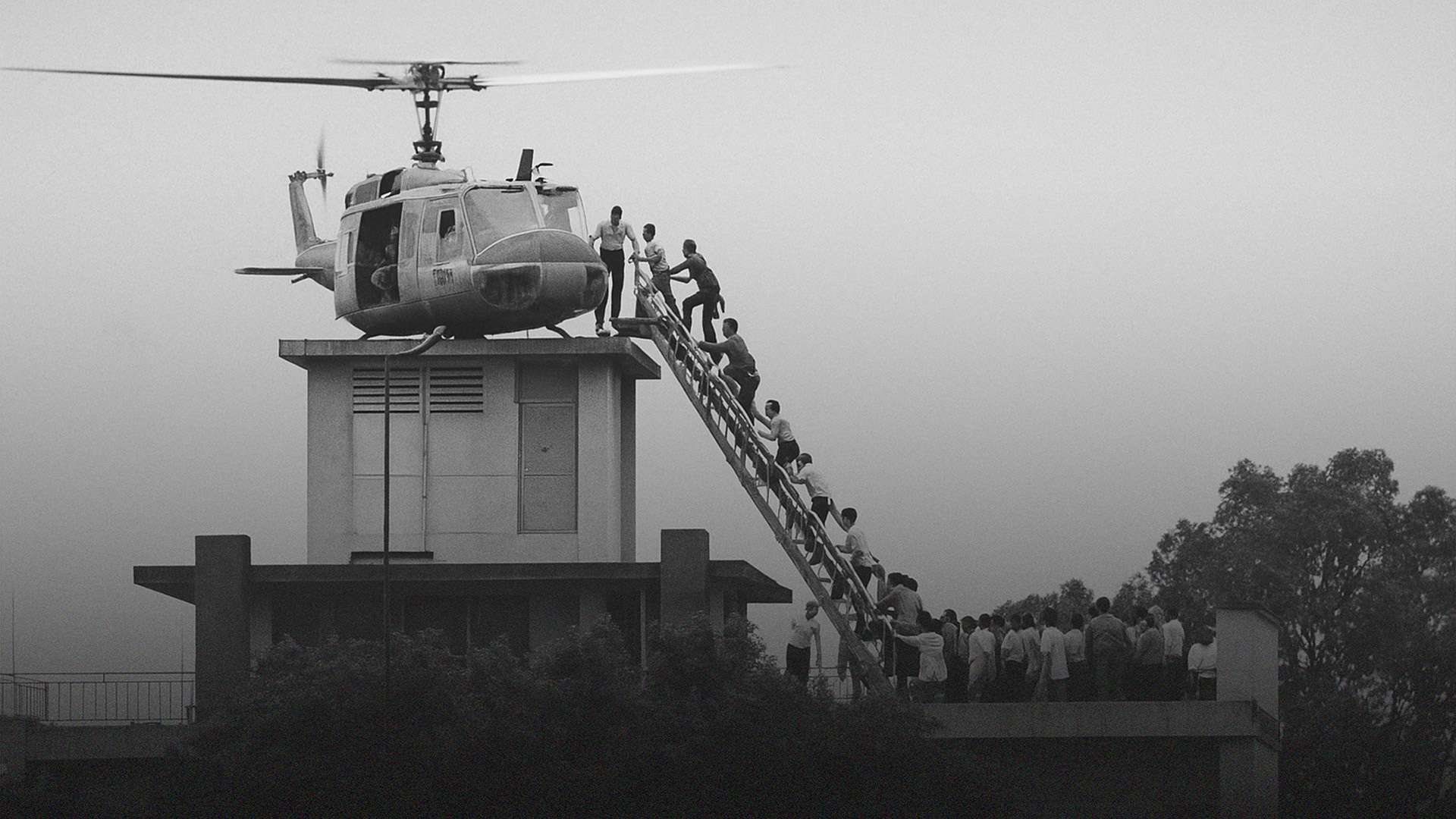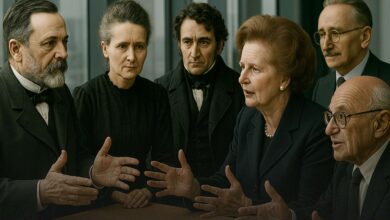Fall of Saigon, 50 Years On

Fifty years ago today, Americans were glued to their television sets. Flickering screens showed frightened civilians pushing their way up a rickety rooftop stairway, desperately trying to climb aboard one of the last departing helicopters.
On April 30, 1975, Saigon fell to the communist armies of North Vietnam, just two years after the Paris Peace Accords and the departure of American forces. The event still polarizes the American public. According to a poll by Emerson College, 44% of adults believe the Vietnam War was unjustified, while 29% say it was justified.
The Vietnamese diaspora are less conflicted, still referring to it as “Black April” or “The Day the Country Was Lost.”
Despite the US military retreat two years earlier, this final, chaotic, terrifying scene was a black eye to a nation that had never lost a war. Korea and the War of 1812 ended with treaties, but neither was an outright defeat. The image of a helicopter on a rooftop certainly ended the myth of American invincibility, earned from the capitals of Europe to the coasts of Japan.
Despite that day’s bleak visuals, Operation Frequent Wind remains the largest helicopter evacuation in history, saving nearly all Americans and Vietnamese allies who wanted to escape. Yet, like Dunkirk, it was merely a successful retreat. One the American people demanded. And, in a democracy, the people ultimately decide.
After nearly two decades of intervention, the public and both political parties had tired of the conflict. The war began under President Eisenhower, intensified with Kennedy and Johnson, and finally ended with Nixon’s treaty falsely declaring “peace with honor.” In a last-ditch effort to prevent Saigon’s fall, President Ford asked Congress for financial aid, but the measure failed. South Vietnam paid the price.
Hundreds of thousands were sent to re-education camps, where they faced torture, starvation, and disease. Thousands more fled in makeshift boats, seeking sanctuary from the oppression. Many eventually arrived in the US, where they raised families, built communities, and started a wide array of successful businesses.
In an odd quirk of fate, even the victorious communists eventually made peace with capitalism, decades later. In 2001, their new economic plan enhanced the role of the private sector, leading to significant economic growth. By 2007, Vietnam had joined the World Trade Organization, and regularly ranks as one of the fastest-growing economies.
Looking back at the entire conflict, fingers can’t be pointed at one president, one party, or one event. With hindsight, however, many lessons are apparent.
The Fall of Saigon is what happens when government overreach extends into war-making without clarity, conviction, or constitutional constraint. Congress never formally declared war, violating the very framework the Founders established to avoid foreign entanglements. Instead of empowering military experts on the ground, politicians micromanaged from DC, all the while keeping a twitching eye on public opinion. The war actually was won in the paddies and jungles of Southeast Asia, but was definitively lost in the marble halls of Congress and the editorial offices of the press.
Vietnam birthed the modern anti-American Left, which interpreted the war not as a failure of execution, but as an indictment of the American experiment itself. From lecture halls to Hollywood, the narrative of America as an imperial oppressor took root. The result was a generation of political leaders, academics, and cultural elites who questioned not just foreign policy, but the very legitimacy of American leadership.
The Left used Vietnam as a political cudgel, bearing much of the moral blame for what followed. When progressive politicians refused to honor America’s commitments, millions were left to suffer under a totalitarian regime. The American political establishment—dominated by a post-Watergate liberal consensus—chose to disengage rather than finish what Democrats had helped start. But Republicans hardly emerge with honor either.
Paired with Nixon’s resignation, Vietnam deepened a national distrust of government, if not outright contempt. The “Vietnam Syndrome” took hold, fostering cynicism, defeatism, and a hesitance to project American power even when justified. The public’s skepticism of military action became deeply ingrained—sometimes wisely, often reflexively.
The tragedy today is that our leaders still haven’t learned. In 2021, we watched the Fall of Kabul unfold in eerily similar fashion. Afghans clung to airplanes as the Taliban marched on the capital, again showing America breaking her promises. These bookends of defeat—Saigon and Kabul—share a common thread: political leaders who would rather “end wars” than win them, and bureaucratic inertia that prizes optics over outcomes.
Both tragedies severely eroded America’s credibility. Our failure in Vietnam was followed by the Soviet Union’s invasion of Afghanistan. Our chaotic retreat from Kabul was followed by Russia’s invasion of Ukraine. It’s hard to see either of these as coincidental.
Going forward, politicians in both parties shouldn’t extend military interventions into multi-decade affairs. Voters may tolerate a quick strike and even a brief occupation. But they consistently turn against wars that outlast presidencies. There’s something especially dark about seeing a 20-year Afghanistan veteran serving alongside his son or daughter in Kandahar.
As the post-WWII Cold War order recedes, the US can no longer serve as the worldwide cop on the beat. Instead, Washington should craft a principled but limited foreign policy, rooted in national security. Promising much beyond that will result in more broken promises, foreign aggression, and human suffering. And many, many more Saigons.
Additional Reading:
How Vietnam Went From the Poorest Economy in the World to a Prosperous Exporter by Jon Miltimore
Lessons from Vietnam for a Divided America by Tien Dinh
The post Fall of Saigon, 50 Years On was first published by the Foundation for Economic Education, and is republished here with permission. Please support their efforts.



